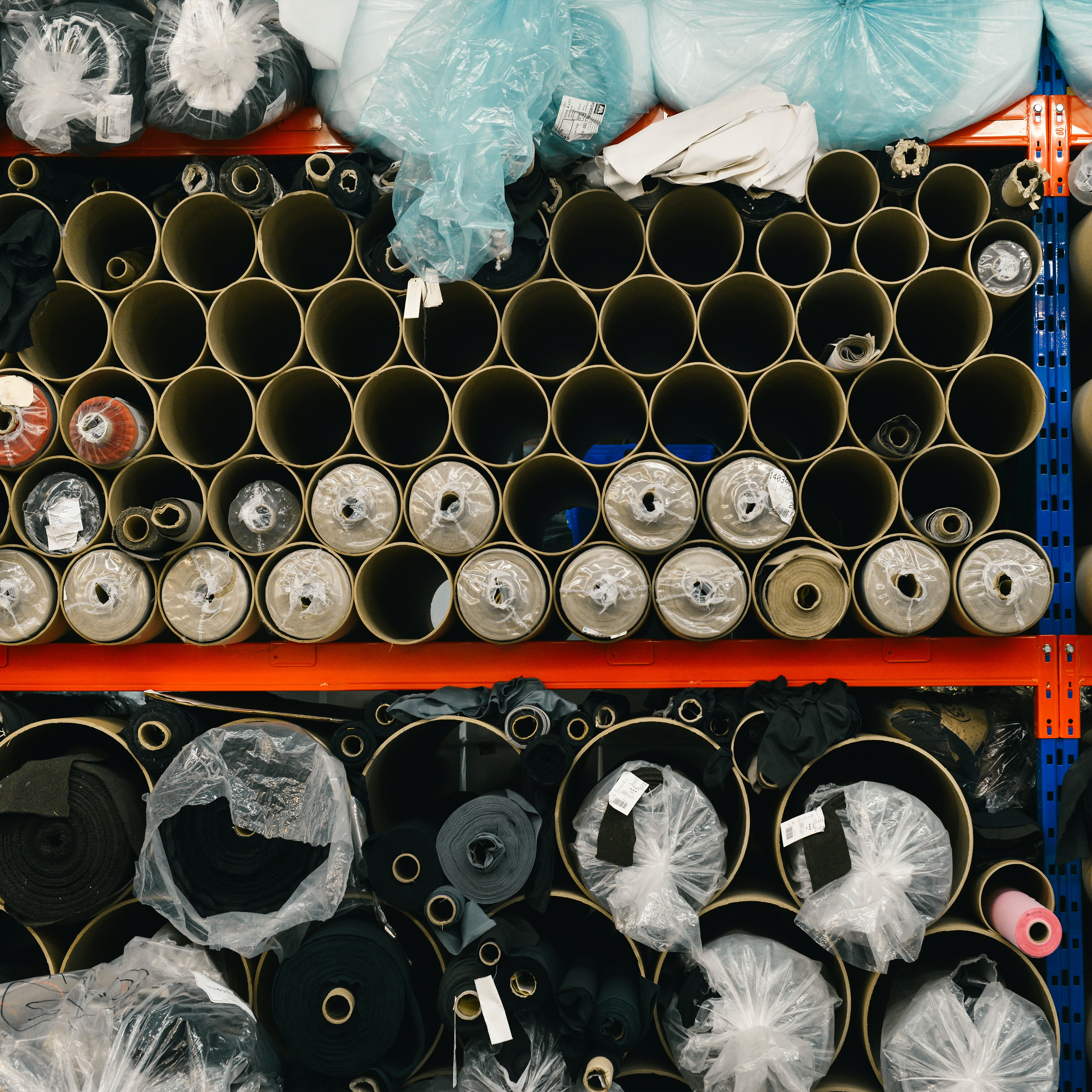Effective raw material management is crucial for a business’s manufacturing operations, as it directly impacts production efficiency, cost control, and customer satisfaction. However, traditional inventory management methods often fall short when it comes to managing raw materials effectively. Today, with the advent of asset tracking technology, businesses now have access to a powerful solution for optimizing their raw materials management practices. Let’s explore the role of raw material inventory management in the manufacturing process, how traditional methods fall short, and how an asset tracking system can assist your operations all the way from raw materials to finished goods.
The Role of Raw Material Inventory Management
Raw material inventory management plays a critical role in the success and profitability of any business that relies on a steady supply of materials to produce goods or deliver services. Effective management of raw material inventory ensures that businesses have the materials they need as soon as they need them, allowing them to minimize the time spent waiting for restocks. It can also help them project how much more material they might need when their operations expand further down the road, providing a reliable source of data that can be used to make decisions about company expansion and related expenses. The role of effective raw material management encompasses:
Ensuring Uninterrupted Production
One of the primary objectives of raw material inventory management is to ensure uninterrupted production. By maintaining an adequate stock of essential materials, businesses can meet customer demands consistently and avoid disruptions in their manufacturing processes. This enables them to fulfill orders promptly and maintain a competitive edge in the market.
Minimizing Stockouts and Backorders
Stockouts and backorders refer to instances where a material necessary for production has either all been used or is delayed at the source. Both can have a detrimental impact on customer satisfaction and the overall reputation of a business, as it causes a stall in production. Effective raw material inventory management allows businesses to minimize the occurrence of stockouts by accurately forecasting demand, establishing appropriate reorder points, and optimizing safety stock levels. This helps ensure that materials are available when needed, reducing the risk of delayed deliveries or unfulfilled orders.
Mitigating Risks and Uncertainties
The global supply chain is susceptible to various risks and uncertainties, including natural disasters, political instability, and other unforeseen events. Raw material inventory management helps mitigate these risks by informing strategies such as diversifying suppliers, maintaining buffer stocks, and establishing contingency plans in order to maintain consistent stock based on pre-existing numbers. These measures provide businesses with the flexibility to adapt to changing circumstances and minimize the impact of supply chain disruptions.
Managing Costs and Cash Flow
Raw material inventory represents a significant portion of a business's assets and capital investment. Efficient inventory management allows businesses to optimize costs and cash flow by minimizing carrying costs, reducing excess inventory, and optimizing order quantities. Essentially, it can help companies understand their spending and use that understanding to make sure they’re not needlessly overspending. By aligning inventory levels with demand forecasts and adopting appropriate inventory control techniques, businesses can strike a balance between meeting customer needs and minimizing inventory holding costs.
Increase Your ROI by Investing in AirFinder OnSite
- Low Cost. AirFinder OnSite XLE is a fraction of the cost of competitors' pricing.
- Long Battery Life. XLE lasts up to 7 years with hundreds of location updates daily.
- Increased Efficiency. Spend less time looking for assets, and more time being productive.
The Failures of Manual Raw Material Management Strategies
There are plenty of traditional approaches to raw material tracking that involve manual tracking methods. In particular, paper-based systems that require inventory data to be recorded on physical sheets have been used for decades. Like many written systems, this strategy relies on manual data entry and record-keeping, requiring due diligence from employees in order to update and maintain accurate records.
A similar manual strategy is spreadsheet-based tracking. Whether paper or digital, spreadsheets provide a more organized approach to recording raw material data, enabling calculations and basic data analysis with far more ease that form-based paper systems might. However, the spreadsheet system is still prone to the same errors inherent to other manual tracking, failing to provide true real-time visibility into inventory levels.
While these traditional raw material tracking methods are better than having no strategy in place, the failings of manual inventory management are readily apparent. Regardless of whether data collection is conducted by hand or digitally, manual data entry is time-consuming and prone to errors. Invariably, this leads to discrepancies in inventory records, a failing that can easily render any collected data or decisions derived from that data useless at best or harmful at worst. These methods also cannot provide real-time visibility, making it challenging to monitor stock levels and respond promptly to changes in demand or supply.
In recent years, barcoding technology has emerged as a potential replacement for manual raw material tracking. Barcodes are unique identifiers assigned to each raw material item, which can be scanned using barcode readers or mobile devices equipped with barcode scanning capabilities. While this eliminates some of the potential for human error, as the information is automatically recorded upon scanning, it still has glaring limitations in terms of real-time visibility. After all, you need to know where something is in order to scan it, and there’s always the possibility that someone overlooks the need to scan something when they move it. But if even barcode scanners are unreliable, what is the answer?
The Benefits of Raw Material Tracking Technology
The best way to improve your raw material tracking is to invest in an IoT asset visibility solution for raw material manufacturing. These systems solve all of the same problems and have all of the same benefits as the more traditional tracking methods that your workers might be used to. However, they also serve to fill in the gaps left within the very methodology of using papers, spreadsheets, or even barcode scanning. In other words, they have the same benefits as traditional methods plus added benefits that those methods do not and often cannot have. By implementing effective tracking systems and processes, businesses can achieve the following benefits:
Real-Time Inventory Visibility and Control
Raw material asset tracking provides businesses with real-time visibility into their inventory levels, locations, and usage in a way that other asset tracking methods are simply not equipped to. This technology simply requires that you add tags to what you want to track, then it records location without any further action. By monitoring the quantity and status of raw materials in real time, organizations can make informed decisions regarding procurement, production planning, and order fulfillment that actually reflect their current inventory levels. This visibility allows for proactive inventory management instead of just reactive management, further reducing the risk of stockouts, overstocking, or expired materials.
Improved Operational Efficiency
Efficient raw material asset tracking streamlines the flow of materials within the production process, resulting in improved operational efficiency and productivity. This is true for even manual tracking methods, as long as they’re properly maintained. By minimizing the time spent searching for or waiting on materials, employees can focus on value-added activities, leading to faster production cycles and increased output. The added value that comes from using an automated asset tracking system arises in the case of lost materials. After all, if materials are lost, it’s likely because someone did not follow proper procedures, and therefore there is not likely to be records of the movement on a more manual system. An RTLS solution does not rely on manual input, so there’s no chance of losing something due to improper records; the tag attached will tell you where the material you are looking for is, saving you from a time-wasting search or restock. This optimization of time and resources contributes to overall operational excellence.
Cost Savings and Budgeting
Technology-enabled raw material asset tracking enables businesses to identify and address inefficiencies in their inventory management practices, which leads to further benefits for the company. Most notably, by optimizing order quantities, reducing excess stock, and minimizing waste from expired or obsolete materials, organizations can achieve significant cost savings. Additionally, accurate tracking helps avoid over-ordering or duplicate purchases, preventing unnecessary expenses concerning replacements and storage.
Regulatory Compliance and Quality Assurance
In industries with strict regulatory requirements, such as pharmaceuticals or food manufacturing, raw material asset tracking plays a crucial role in ensuring compliance and quality assurance. Tracking systems allow for traceability and batch control, which helps facilitate the recall processes and reduce the impact of potential product recalls. Further, the tags that these systems rely on can be integrated with condition monitoring sensors that can inform workers of unexpected changes in the temperature, humidity, and other conditions of the sensitive raw materials. In doing so, they can address any issues that might cause a decline in the final product’s quality or at least ensure that the compromised materials are not used in production. This not only safeguards consumer safety but also protects the reputation and integrity of the business.
The Best Solution for Raw Material Tracking
For the best raw material tracking solution, RTLS asset tracking systems truly provide the greatest value with the greatest benefits. The investment pays for itself in the money you’ll save from restocking and storage fees, and that’s before considering the increase in production uptime and customer satisfaction. Link Labs provides one such solution that can help your company maintain full visibility of your raw material inventory. Our AirFinder Onsite solution is designed to provide up to 30-centimeter accuracy, so you can find the raw materials you need when you need them. Our platform also lets you maintain usage and condition data to help you better understand your operations and maintain compliance with industry standards. Book a demo today to learn how AirFinder Onsite can help your manufacturing operations with raw material management and beyond.




